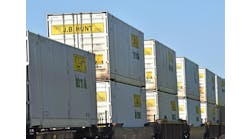"Trying to efficiently accommodate integrated product returns without adopting comprehensive and workable processes is comparable to climbing Mt. Everest without oxygen," says Raj Penkar, vice president of consulting services with UPS Supply Chain Solutions (www.upsscs.com). "It can be done, but it's not easy."
It's not unusual, he says, to have four or five legs of transportation and handling involved when a piece of high-tech equipment has to be replaced or repaired.
When it comes to post-sales service in the high-tech industry, whether a company chooses to do it or assign it to a third party, Penkar suggests adhering to what he calls "the 4 R's of integrated returns management — recovery, reconciliation, repair and recycling.
"While customers have several options with regards to returning products," Penkar observes, "the 4 R's provide companies with options to appropriately deal with the variety of returned goods no matter the working condition or appearance. The 4 R's, when intertwined, can provide an effective post-sales supply chain that increases the efficiencies of returns management."
- Recovery — "Being able to recover assets from field engineers or customers is important to controlling a company's inventory levels as well as maintaining, overseeing and monitoring product reliability," Penkar says. "In order to have an efficient recovery program, a company must have accessibility to a transportation network, drop off locations, such as retail stores, shipping outlets or advanced exchange programs. The quick recovery of assets allows a company to test defective parts, find a quick solution and get improved products back into the market."
- Reconciliation — What's the next step after product is returned to a distribution facility? "A variety of tests can be performed on the returned products to determine the appropriate returns channel that needs to be used, such as repair, restock, refurbish or recycle," he notes. Often, a significant percentage of returned products are diagnosed as "No Trouble Found" and can be restocked immediately, thus reducing inventory in the post-sales supply chain.
- Repair — "The repair of time-critical products is essential to minimize a customer's downtime," Penkar stresses. Customers expect a 24-to 48-hour turnaround.
- Recycling — Government enforcement of proper handling standards for used and obsolete electronic products is increasing globally — e.g., the WEEE (Waste Electrical and Electronics Equipment) regulations being put into place in the European Union. It's important, Penkar says, that companies address the logistics processes to reclaim these products, the product disposition, the high costs of managing returns, and the liability associated with this activity if done incorrectly.


